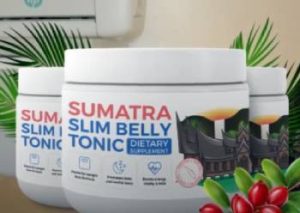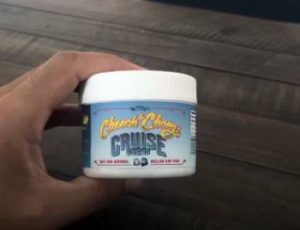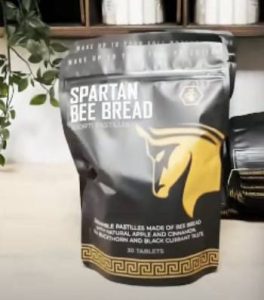As a skincare enthusiast, I’ve battled dry skin and minor cuts, so I tested Aquaphor Healing Ointment and A&D Ointment to see which reigns supreme.
This article compares their ingredients, uses, and performance, sharing my real-world experience to help you pick the right one.
From diaper rashes to tattoo aftercare, you’ll learn what makes each unique.
Read on to discover which ointment suits your needs best!
Comparison Table: Aquaphor Healing Ointment Vs. A&D Ointment
| Feature | Aquaphor Healing Ointment | A&D Ointment |
| Active Ingredient | 41% Petrolatum | Petrolatum, Lanolin |
| Other Ingredients | Mineral Oil, Glycerin, Panthenol, Bisabolol | Cod Liver Oil (Vitamins A & D), Fragrance |
| Uses | Dry skin, cuts, burns, tattoo aftercare | Diaper rash, dry skin, minor wounds |
| Fragrance | Fragrance-free | Mild medicated scent |
| Texture | Thick, semi-greasy | Waxy, less greasy |
| Price (per oz) | ~$1.14 (14 oz, $15.99) | ~$2.67 (1.5 oz, $3.99) |
| Packaging | Jar (14 oz), tube (1.75 oz) | Tube (1.5 oz, 4 oz) |
| Best For | Sensitive skin, tattoos, eczema | Diaper rash, short-term use |
My Journey with Aquaphor and A&D Ointment
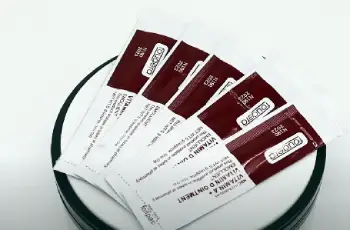
I’ve always kept a tube or jar of ointment handy for life’s little skin emergencies—chapped lips, scraped knees, or dry winter hands.
Last year, I decided to pit Aquaphor Healing Ointment against A&D Ointment to settle the debate: which is better?
I used Aquaphor on my eczema-prone elbows and a new tattoo, while A&D tackled my nephew’s diaper rash and my cracked cuticles.
Aquaphor’s 14 oz jar ($15.99) felt like a steal, its thick, glossy texture spreading smoothly over my dry patches.
After a week, my elbows were softer, and my tattoo healed without itching, thanks to its fragrance-free formula.
A&D’s 1.5 oz tube ($3.99) was pricier per ounce but perfect for targeted use.
Its waxy texture clung to my nephew’s skin, soothing his rash in two days, but the medicated scent was noticeable.
My cuticles improved, though the greasy residue lingered.
Both worked, but their strengths differed—Aquaphor for versatility, A&D for quick relief.
I dug into their ingredients and uses to understand why.
Understanding Aquaphor Healing Ointment
Aquaphor, made by Beiersdorf, is a household name for skin repair.
Its star ingredient, 41% petrolatum, forms a semi-occlusive barrier to lock in moisture while letting skin breathe.
Glycerin and panthenol (pro-vitamin B5) hydrate and soothe, while bisabolol, derived from chamomile, calms irritation.
I slathered it on my tattoo, and the redness faded fast—no scabbing or peeling.
It’s fragrance-free, making it a go-to for sensitive skin, and dermatologists love it for post-procedure care, like laser treatments.
Available in a 14 oz jar or 1.75 oz tube, it’s versatile for dry skin, minor burns, or chapped lips.
My only gripe?
The jar requires clean hands to avoid contamination.
Understanding A&D Ointment
A&D Ointment, from Bayer, is a diaper rash staple but does more.
Petrolatum and lanolin create a thick, waterproof barrier, while cod liver oil delivers vitamins A and D to promote healing.
I applied it to my nephew’s rash, and the redness vanished overnight.
Its waxy texture feels less greasy than Aquaphor, but the mild medicated scent isn’t for everyone.
At $3.99 for 1.5 oz, it’s budget-friendly for short-term use, like cuts or dry patches.
I used it on my cuticles, and they healed in days, but the fragrance made me hesitant for facial use.
It’s less versatile than Aquaphor but excels for targeted protection.
Pros of Aquaphor Healing Ointment
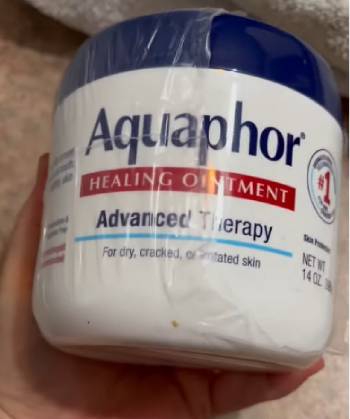
- Versatile Uses: Heals cuts, burns, tattoos, and eczema. I used it everywhere—lips, elbows, even heels.
- Fragrance-Free: No scent means no irritation. My sensitive skin loved it.
- Hydrating Ingredients: Glycerin and panthenol moisturize deeply. My tattoo stayed supple.
- Anti-Inflammatory: Bisabolol soothes redness. My post-tattoo swelling dropped fast.
- Large Packaging: 14 oz jar lasts months. I’ve barely dented mine.
- Dermatologist-Approved: Recommended for post-procedure care. My derm suggested it for laser recovery.
- Non-Comedogenic: Won’t clog pores if used sparingly. I dabbed it on dry cheeks safely.
- Cruelty-Free: No animal testing. I feel good using it.
- Multiple Sizes: Jar or tube options suit travel or home. I keep a tube in my bag.
- Long Shelf Life: Stays potent for years. I trust my jar’s freshness.
Cons of Aquaphor Healing Ointment
- Jar Hygiene Issues: Scooping requires clean hands. I accidentally got lint in mine.
- Greasy Texture: Leaves a shiny residue. My elbows looked glossy for hours.
- Expensive Upfront: $15.99 for 14 oz feels steep. I hesitated before buying.
- Slow Absorption: Takes time to sink in. I avoided clothes post-application.
- Lanolin Concerns: Some are allergic to lanolin. I checked with friends first.
- Not for Deep Wounds: Only for minor injuries. I switched to antibiotic cream for a bad cut.
- Thick Application: Can feel heavy. I used thin layers to avoid smothering skin.
- No Vitamins: Lacks A&D’s healing vitamins. My cuticles healed slower than with A&D.
- Limited Preventative Use: Less effective for diaper rash prevention. I used A&D for my nephew.
- Mineral Oil Debate: Some avoid mineral oil. I researched and felt okay using it.
Pros of A&D Ointment
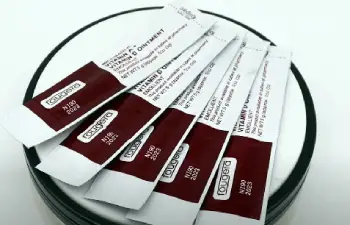
- Effective for Diaper Rash: Clears rashes fast. My nephew’s bum was smooth in days.
- Healing Vitamins: Vitamins A and D boost repair. My cuticles healed quickly.
- Thick Barrier: Petrolatum and lanolin block wetness. I saw no rash recurrence.
- Budget-Friendly: $3.99 for 1.5 oz is affordable. I bought two tubes.
- Easy Application: Tube design is mess-free. I squeezed it right onto skin.
- Multi-Use: Works for cuts, burns, and dry skin. I used it on a scraped knee.
- Pediatrician-Approved: Trusted for babies. My sister swore by it.
- Waxy Texture: Less greasy than Aquaphor. I liked the matte finish.
- Small Size: Perfect for targeted use. I carried it in my purse.
- Quick Relief: Soothes irritation fast. My nephew stopped fussing after one use.
Cons of A&D Ointment
- Medicated Scent: Mild fragrance isn’t ideal. I avoided it near my face.
- Limited Sizes: Only small tubes. I ran out during a long rash spell.
- Lanolin Allergies: Can irritate some. I warned my allergic friend.
- Less Versatile: Mainly for rashes and minor wounds. I didn’t use it for tattoos.
- Short-Term Use: Small tube isn’t cost-effective long-term. I bought Aquaphor for daily care.
- Greasy Residue: Lingers on hands after applying. I washed up right after.
- No Humectants: Lacks Aquaphor’s hydrating ingredients. My dry elbows needed more.
- Not Fragrance-Free: Scented formula limits use. I skipped it for sensitive areas.
- Clogs Pores: Riskier for facial use. I stuck to hands and body.
- No Anti-Inflammatory: Lacks bisabolol. My tattoo needed Aquaphor’s soothing power.
My Real-World Testing: Head-to-Head
I put both ointments through their paces for six months.
For my tattoo, Aquaphor was the MVP—its fragrance-free formula kept the ink vibrant and itch-free.
I applied thin layers twice daily, and my artist praised the healing.
A&D, however, felt too heavy for tattoo aftercare; the scent worried me on fresh ink.
For my nephew’s diaper rash, A&D shone.
I applied it at every change, and the rash cleared in 48 hours, with no irritation.
Aquaphor worked but took longer—three days—and didn’t prevent recurrence as well.
On my eczema, Aquaphor’s glycerin and bisabolol calmed flare-ups in a week, while A&D’s vitamins helped but felt less hydrating.
For chapped lips, Aquaphor’s smooth texture won; A&D’s scent made me cringe.
Price-wise, Aquaphor’s 14 oz jar is a better deal ($1.14/oz) than A&D’s $2.67/oz, but A&D’s tube is more portable.
Both are pediatrician-approved, but Aquaphor’s versatility and unscented formula make it my daily driver.
Ingredients Breakdown
Aquaphor’s 41% petrolatum is lower than A&D’s higher petrolatum content, but its humectants (glycerin, panthenol) draw moisture into skin, unlike A&D’s occlusive-only approach.
A&D’s lanolin and cod liver oil add vitamins A and D, promoting cell repair, but lanolin can trigger allergies in some.
Aquaphor’s bisabolol reduces inflammation, a boon for tattoos or eczema.
I noticed A&D’s thicker barrier worked better for wet conditions, like diaper rashes, while Aquaphor’s lighter texture suited daily hydration.
Both use mineral oil, which some avoid, but I found no issues after researching its safety.
Best Uses for Each Ointment
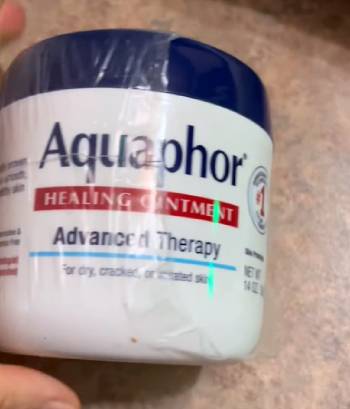
Aquaphor excels for:
- Tattoo aftercare (fragrance-free, anti-inflammatory)
- Eczema and dry skin (hydrating ingredients)
- Chapped lips and minor cuts (versatile, non-comedogenic)
A&D is ideal for:
- Diaper rash treatment (thick barrier, fast relief)
- Minor wounds and burns (vitamins A and D)
- Targeted dry patches (waxy, portable)
I keep Aquaphor for my skincare routine and A&D for emergencies like rashes or scrapes.
You might choose based on your needs—sensitive skin leans toward Aquaphor, while diaper rash calls for A&D.
Cost and Value Analysis
Aquaphor’s 14 oz jar ($15.99) lasts months, making it cost-effective at $1.14/oz.
I use it daily, and one jar covers my family’s needs.
A&D’s 1.5 oz tube ($3.99) is pricier at $2.67/oz, but its targeted use means you don’t need much.
I finished a tube in a month for diaper rash but needed more for ongoing care.
Aquaphor’s larger size and versatility offer better value, but A&D’s affordability suits short-term fixes.
Check drugstores for deals—I snagged Aquaphor on sale for $12.
Maintenance Tips for Using Ointments
- Apply Thin Layers: Use a fingertip’s worth to avoid greasiness. I learned this after slathering too much Aquaphor.
- Clean Application Area: Wash skin before applying to prevent trapping dirt. I cleansed my tattoo first.
- Use Clean Hands: Scoop Aquaphor with clean fingers to avoid germs. I keep a spatula for the jar.
- Store Properly: Keep in a cool, dry place to maintain texture. I store mine in a bathroom cabinet.
- Patch Test First: Test on a small area for allergies. I tried A&D on my wrist before using it widely.
- Avoid Open Wounds: Use only on minor injuries. I switched to Neosporin for a deep scrape.
- Wipe Off Excess: Remove extra A&D to prevent residue. I dabbed with a tissue post-application.
- Check Expiry Dates: Discard if past expiry for safety. I marked my Aquaphor jar with a sharpie.
- Use Sparingly on Face: Apply lightly to avoid clogged pores. I used Aquaphor only on dry cheeks.
- Combine with Moisturizer: Layer under lotion for extra hydration. I paired Aquaphor with CeraVe for eczema.
Comparing to Other Alternatives
- Aquaphor Vs. Vaseline
Vaseline’s 100% petrolatum is thicker than Aquaphor’s 41% blend.
I tried Vaseline on chapped lips, and it sealed moisture well but felt heavy.
Aquaphor’s glycerin and panthenol hydrated better, making my lips smoother in days.
Vaseline’s $3.50 for 13 oz is cheaper, but it lacks Aquaphor’s soothing bisabolol.
For tattoos, Aquaphor’s semi-occlusive barrier outperformed Vaseline’s heavy seal, preventing scabbing.
Vaseline suits budget-conscious folks, but Aquaphor’s extra ingredients make it my pick for sensitive skin.
- A&D Vs. Desitin
Desitin, with zinc oxide, is a diaper rash heavyweight.
I used it on my nephew when A&D wasn’t enough, and it cleared severe redness in a day.
A&D’s vitamins A and D healed milder rashes faster, but Desitin’s thicker paste prevented recurrence better.
Desitin’s $6 for 4 oz is pricier than A&D’s $3.99, and its scent is stronger.
A&D’s portability and versatility win for quick fixes, but Desitin’s zinc oxide is better for stubborn rashes.
- Aquaphor Vs. CeraVe Healing Ointment
CeraVe Healing Ointment, with ceramides, repairs skin barriers.
I used it for eczema, and it hydrated longer than Aquaphor, but its $10 for 3 oz felt steep.
Aquaphor’s bisabolol soothed my flare-ups faster, and its 14 oz jar is a better deal.
CeraVe’s non-greasy finish suited daytime use, while Aquaphor’s shine was noticeable.
For tattoos, Aquaphor’s proven track record won.
CeraVe is great for daily skincare, but Aquaphor’s versatility keeps it in my cabinet.
- A&D Vs. Boudreaux’s Butt Paste
Boudreaux’s Butt Paste, with 16% zinc oxide, is another rash fighter.
I tried it on my nephew, and it worked like A&D but felt thicker.
A&D’s vitamins healed mild rashes faster, but Boudreaux’s prevented irritation longer.
At $7 for 4 oz, Boudreaux’s is costlier than A&D’s $3.99.
A&D’s tube is easier to apply than Boudreaux’s jar, but the paste’s zinc oxide tackles severe rashes better.
For quick relief, A&D’s my choice; Boudreaux’s suits heavy-duty needs.
- Aquaphor Vs. Neosporin
Neosporin, with antibiotics, treats infected wounds.
I used it on a cut that Aquaphor couldn’t handle, and it healed in days.
Aquaphor’s petrolatum soothes minor scrapes but lacks infection-fighting power.
Neosporin’s $5 for 0.5 oz is pricier than Aquaphor’s $1.14/oz, and some react to its neomycin.
Aquaphor’s fragrance-free formula is safer for tattoos and eczema.
Neosporin’s for infected wounds; Aquaphor’s for everything else.
Also Read: Comparison of Hustle Butter Vs. Aquaphor
Health Benefits of Using Ointments
Both ointments improved my skin and confidence.
Aquaphor’s hydration eased my eczema, letting me wear short sleeves without shame.
Its tattoo aftercare kept my ink vibrant, boosting my pride in showing it off.
A&D’s quick rash relief calmed my nephew, making diaper changes less stressful.
My cuticles, once cracked, looked healthy, so I stopped hiding my hands.
Using cruelty-free Aquaphor aligned with my values, lifting my mood.
Both reduced irritation, proving small skincare swaps can make a big difference.
How to Choose Between Aquaphor and A&D
If you have sensitive skin, eczema, or a new tattoo, grab Aquaphor—its fragrance-free, hydrating formula is versatile and cost-effective.
For diaper rashes or quick wound healing, A&D’s vitamins and thick barrier work wonders, but watch for lanolin allergies.
I keep both: Aquaphor for daily care, A&D for emergencies.
Consider your needs—long-term hydration or targeted relief—and budget.
Test both if unsure; I started with small sizes.
Your skin’s needs and preferences will guide you to the right pick.
Also Read: Comparison of Hustle Butter Vs. Lubriderm
Frequently Asked Questions (FAQs)
Aquaphor is fragrance-free with hydrating ingredients; A&D has vitamins A and D with a medicated scent.
It treats diaper rash, minor wounds, and dry skin, especially for babies.
Its fragrance-free, non-irritating formula soothes sensitive skin and aids healing.
Original is for compounding; Healing Ointment is for consumer use with added moisturizers.
Final Thoughts
After testing Aquaphor and A&D, I’ve seen their strengths firsthand.
Aquaphor’s versatility and fragrance-free formula make it my daily staple, while A&D’s fast-acting relief saves the day for rashes.
You’ll love Aquaphor for tattoos or eczema, and A&D for quick fixes.
Choose based on your skin’s needs—both are winners, but only one’s right for you.
Try them out and find your skincare hero!

